This build has been archived by the author. They are no longer supporting nor updating this build and it may have become outdated. As such, voting and commenting have been disabled and it no longer appears in regular search results.
We recommend you take a look at this author's other builds.
This guide has not yet been updated for the current season. Please keep this in mind while reading. You can see the most recently updated guides on the browse guides page
 Thank You!
Thank You!
Your votes and comments encourage our guide authors to continue
creating helpful guides for the League of Legends community.
Recommended Items
Runes:


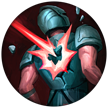
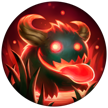
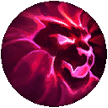

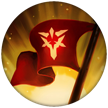
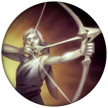
Spells:

Smite

Flash
Items
Ability Order

Carnivore (PASSIVE)
Cho'Gath Passive Ability

 |
Hi, I'm PsiGuard and welcome to my I've played Cho'Gath jungle off and on throughout the years. He's risen to prominence in a few metas and often has one of the best jungle clears, but his crowd control isn't consistent enough for him to remain a strong pick through various game changes. Currently he's quite strong after the reworks to Before we begin, I'd like to give a big thank-you to Jovy for her awesome graphics and help with coding this guide (as well as my other guides). Be sure to check out some of her other work at her signature shop and her own guides! |
|
About Cho'Gath /// Runes /// Spells /// Abilities Ability Sequence /// Item Build /// Jungle Monsters Warding /// Plants /// Jungle Routes /// Ganking Wave Management /// Late Game /// Conclusion |

 |
Cho'Gath is very much a tank jungler. He has high threat from Cho'Gath's strength lies in his incredible defensive scaling and his single-target threat. Cho'Gath's biggest weakness is his unreliable crowd control and low mobility. In terms of ganks, he's very much dependent on landing |




|
Honestly most keystones kinda suck on jungle |

|
|

|
To be honest, I'm not 100% sure which of these runes is the best option at the moment, but for now my money's on |

|
One of the highest value runes for Cho'Gath. Permanently lowering your |


|
|

|
The attack speed from this rune plus the |



|
This spell is essential for jungling, as it unlocks the jungle-only items which you need to keep up in experience. The spell is also essential for securing monster objectives like buff camps, dragon and baron. Building |

|

|
Flash - This is a core spell on most champions in the game and Cho'Gath is no exception. In addition to the flexibility it adds by allowing you to dodge skillshots, hop walls and escape death, Cho'Gath can also use Flash in order to reach priority targets to burst with |




|
Whenever Cho'Gath kills a unit, he recovers 20 - 71 (+2.83 each level) Health and 3.5 - 7.75 Mana (+0.25 each level). |
This is a pretty straightforward passive that's mostly just used for sustain while jungling (or if you're laning with Cho'Gath, while laning!). You don't need to do anything special to make use of this in your clear, so just remember that it's there to help you out. Worth noting that this passive along with
One thing to remember in combat is that you can last-hit a few minions or pets in order to gain some extra health or mana. Usually this is most useful when you're out of mana, so you last-hit a couple minions and get enough mana for a key spell.

This is probably one of the toughest CCs in the game to land. It's got a respectable AoE, but the cast time combined with the delay makes this spell super obvious and easy to dodge, especially if the enemy has vision of you. One way to increase the likelihood of you landing Rupture is to cast it when you're in fog of war (in a bush or over a wall), since the enemy will only have a half-second to react since they can't see your cast animation.
In your jungle clear,
The easiest way to land this ability is to use it after an allied champion uses their own CC to slow or stop the target. Most CCs in the game are strong enough to prevent enemies from walking out of your Rupture, though if they're slowed, they may still
Remember that, like other knockups, you can use this ability to interrupt channels or dash abilities. Keep that in mind when playing against champions like



|
After 0.5 seconds, Cho'Gath screams in a cone in front of him, silencing enemies for 1.6 / 1.7 / 1.8 / 1.9 / 2 seconds and dealing 75 / 125 / 175 / 225 / 275 (+70% of ability power) magic damage. |
Feral Scream is much easier to land than Rupture, but isn't as rewarding. At rank 1 the damage is pretty low, so I recommend only using this against jungle monsters if you have blue buff to sustain your mana. Once you get more points in it, it starts dealing more respectable damage compared to Rupture, which will stay at rank 1.
While not completely reliable,
If you're not familiar with Silence effects, it prevents enemy champions from casting any of their abilities, using activatable items, or using
Silences are useful against almost every champion but since this ability has a long cooldown, you'll need to decide how to prioritize it. In some games, you might want to save


First thing to note about this ability is that it's an autoattack reset. This means if you autoattack, and then press E as soon as it completes, you'll attack twice in quick succession. You'll want to reset your autoattack pretty much every time you cast E, so get used to where the animation cuts off.
Secondly, and perhaps most importantly, the cooldown starts when you finish your final attack, or once the buff expires. This means there's a big difference in DPS if you only manage to attack once or twice with your E active, since you'll be waiting the full duration of the buff and then the full duration of the cooldown. To maximize the up-time on this spell, you need to get your attacks off as quickly as possible.
The mana cost is 30 at all ranks, which is really really low. You'll want to be using
The slow on this spell is pretty decent, so it can help you set up
A nice feature of this ability is that the range is calculated from edge-to-edge. What this means is that when you're really big because of


Using this ability in combat is pretty straightforward. If you can kill the target with Feast, you use it. If you can't, you chip away at them until they're low enough. The only reason to use Feast on a target you can't kill would be if they're about to get out of your range (but could die to an ally) or you're about to die. If an enemy's health is low enough that they will die from Feast, a ring of glowing red teeth appears underneath them.
The tricky part of this ability is managing the cooldown. You'll want to get your 6 stacks from minion and monsters while keeping the cooldown available for important ganks and fights. You'll also want to use Feast to last-hit epic monsters, both to secure them and for the free stack. Making the best use of your Feast cooldown is difficult and will require some practice. Here are some rough priorities to point you in the right direction:
- Use
 Feast to secure contested objectives (baron and dragon).
Feast to secure contested objectives (baron and dragon). - Use
 Feast to kill enemy carries.
Feast to kill enemy carries. - Use
 Feast to kill other enemy champions if you can't get to the carries.
Feast to kill other enemy champions if you can't get to the carries. - Use
 Feast to gain stacks on uncontested epic monsters (they're uncapped!).
Feast to gain stacks on uncontested epic monsters (they're uncapped!). - Use
 Feast during downtime to farm up your 6 stacks from minions and non-epic monsters.
Feast during downtime to farm up your 6 stacks from minions and non-epic monsters.
In order to properly combo
Also since Feast and Smite are both true damage, you can very reliably know how much burst you can deal to an epic monster. Calculate your burst damage beforehand and use the combo above to secure the objective at a far higher health threshold than the enemy can steal. Remember, the base damage against non-champions is increased to 1000, so it'll be 1000 base plus however much damage you're getting from the bonus health scaling. Mouse over the ability to check that.
Like



You may want to take
The normal start is E, Q then W.
As with most champions, put points into your ultimate whenever possible, at 6, 11 and 16.




|

|
I recommend starting with |


|
Switch to |


|
This is my preferred jungle item on |


|
Tabi are pretty much always a notable option on melee champions because virtually every game has an enemy Marksman who will become a major autoattack threat by late game. |


|
This should be a very obvious choice given the champion. |

|
This is a perfect mix of stats for Cho'Gath in the early-mid-game. Not only are armor, health and CDR crucial stats in every game, but the active mitigates one of Cho'Gath's main problems. Instead of fishing for |

|
|


|
You'll probably be buying a |

|
This is your best defense against critical strikes. Many ADCs will be building crit chance throughout the game, adn they're often your biggest threat by late game. If you need defense against a strong ADC and/or the enemy team has other crit champions (more Marksmen, |

|
A decent armor item late game if you still need CDR. I sometimes sell |


|
While it's a little situational, 
 ), damage-over-time effects (
), damage-over-time effects (

 ), multi-hit spells (
), multi-hit spells (

 ), DoT AoEs (
), DoT AoEs (

 ) and magic-empowered autoattacks (
) and magic-empowered autoattacks (

 ). Mages that don't have any of the above types of spells usually can't kill you, making Adaptive Helm usually the best option for personal defense against magic damage.
). Mages that don't have any of the above types of spells usually can't kill you, making Adaptive Helm usually the best option for personal defense against magic damage.
|

|
Stoneplate is a safe option that offers mixed defenses and a lot of extra survivability for team fights. Since |



Familiarize yourself with these spawn times and respawn timers so you know what to expect in-game. If you're already an experienced jungler, feel free to skip this section.
 |
Dragon (Elementals & Elder) Spawns At: 2:20 Respawn Time: 6:00 Elder Dragon Spawns: After 35:00 Elder Dragon Respawn: 10:00 |
 |
Baron Nashor Spawns At: 20:00 Respawn Time: 7:00 |


Plants are stationary, neutral units with 1 health. They can be destroyed with a basic attack to trigger an effect. Three different types of plants will spawn in the jungle and river. Their spawn timers and locations vary slightly but for the most part they are fairly predictable. The first spawn locations for all plants are predetermined.


|
First inner cone spawn: 1:15 - 1:25 First outer cone spawn: 5:00 - 5:30 Inner cone respawn time: 5 - 7 minutes Outer cone respawn time: 5.5 - 6.5 minutes |
- Knocks away nearby units (including the attacker) when destroyed — even over walls.
- Blast Cones spawn in two spots per jungle quadrant, an inner point toward the center of the quadrant, and an outer point near Baron/Dragon.

|
First spawn: 3:00 - 3:30, always at each quadrant’s spawn point nearest to the side lanes Next spawn time: 5 - 6.5 minutes at either spawn point, starting once a given quadrant's Scryer's Bloom is destroyed |
- When destroyed, releases vision-granting pollen in a large cone that flies in the direction the attacker was facing, revealing units and wards for 12 seconds (3 seconds on champions).
- Scryer's Bloom can spawn in two spots per jungle quadrant, close to river ramps.
- Only one Scryer's Bloom can be present per quadrant.

|
First spawn: 6:00 - 6:30 minutes Respawn time: 5.5 - 7 minutes |
- Drops 5 fruits on the ground when killed.
- Each fruit heals for 3.5% of max health or 8 (+6 per level) flat health, whichever is higher.
- Eating a fruit slows you for 35% for 0.25 seconds.
- Honeyfruit spawn along river walls, starting near Dragon or Baron pits and slowly extending closer toward lanes over the course of the game.
- If a Honeyfruit isn't taken before its respawn timer completes, a second Honeyfruit may spawn. No more than two Honeyfruits can exist per half of the river.


As a jungler, you have the most agency when it comes to traversing the map to place down vision, especially in the enemy jungle. When it's safe to do so, try to place deep wards to keep track of the enemy jungler.
Placing a
As the game progresses, you may have to start placing wards nearer to your base if you're losing, or deeper into the enemy jungle if you are winning. Always remember to place a
Below are some of the more valuable ward spots. Of course, warding is always situational, so don't feel restricted to only using these placements if the situation calls for something else.
 |
 |
|
Blue side stealth ward locations
|
Blue side control ward locations
|
 |
 |
|
Red side stealth ward locations
|
Red side control ward locations
|


The current meta for jungle pathing is quite loose and you'll need to adapt quickly to changing circumstances. I'll give you a few basic openings to choose from, but keep in mind any Rift Scuttler you go for may be contested by the enemy jungler. Take note of where the enemy jungler is starting if you can get vision of them and decide ahead of time whether you'll be able to fight them. Also be sure to check your nearby lanes before entering the river. If your laners have priority (they're pushing in and/or are stronger early than their opponents), you'll be safer when fighting for the Scuttler in river.
You'll almost always want to save
With that out of the way, onto the routes!
Standard Routes
Blue - Gromp - Scuttler: This is a fairly efficient opening for red team as you can get a strong leash from your bot lane, which will give you time to clear Gromp before going to contest Scuttler. After hopefully securing Scuttler, you can clear your Wolves, Raptors, Red and Krugs if the enemy jungler is going for an efficient clear on his side of the map. If the enemy jungler is stealing your red buff (and probably other camps near it), you may need to enter the enemy jungle and steal his Raptors / Red / Krugs. Again, note whether nearby enemy laners will be able to easily collapse on you.
Blue - Scuttler: Basically the same as the last route, but quicker in case you won't have time to clear Gromp before the Scuttler spawns at the 2:00 mark. This is more common on blue team, where you'll only have a leash from your top laner. This may also be necessary if you didn't get a leash at all, regardless of which team you're on. Once you're finished the Scuttler, the same options apply, but this time you can go back and clear Gromp before continuing to Wolves.
Red - Raptors - Scuttler: This is an efficient start on blue team since you can get a leash from your bot lane. Similar principles apply to the Blue - Gromp - Scuttler route, only this time you'll be pathing the opposite direction. Keep an eye on your mana bar since you won't have Blue buff to sustain you early on. Do not clear Krugs on your first clear with this route -- it's too far out of your way and you risk giving up camps on your blue side.
Red - Scuttler: If you've read the routes above, you probably already know what I'm going to say. This route gives you faster access to the river in case you needed to clear your Red without a leash or with a minimal leash from a top laner on red team. Other than that, pretty much the same thing as the previous route. You also have the option to invade the enemy jungler early after you take the Scuttler.
Triple-buff Routes
Triple buff routes involve a sneaky level 1 buff steal followed by a quick and efficient clear across your allied jungle. In the ideal case, this'll get you a free camp, set the enemy jungler behind and possibly reduce their effectiveness in the early game due to the loss of the buff. However you risk being collapsed on in the enemy jungle or the enemy jungle could realize what you're doing and counter it by invading your jungle and stealing multiple camps before you can get there.
Steal Blue - Scuttler - Red - Raptors - Wolves - Blue - Gromp: If you're able to sneak the enemy Blue buff, you can try and go for a triple buff and set your opponent behind. This can be pretty effective against mana-hungry junglers but it's also good just for denying experience.
Steal Red - Scuttler - Blue - Gromp - Wolves - Raptors - Red - Krugs: Same idea as the blue steal, but in the opposite direction. You may choose to delay Raptors in order to check and clear your red sooner if you expect the enemy jungler to try and steal it.
Vertical Jungling
Vertical jungling is when both junglers are repeatedly clearing one half of the allied jungle and one half of the enemy jungle, favoring one side of the map. This splits the map into a "strong side" and "weak side" for each team. For example, if you're on blue team and are repeatedly clearing your red-side jungle (south) and the enemy blue-side jungle (east), your team's bottom side will be the strong side of the map. You'll be in a better position to gank bottom lane without fear of counterganks and you'll have better vision control and objective control. Likewise, the opposite side of the map will be dominated by the enemy jungler, making it your team's weak side.
Vertical jungling can be an active choice you make or a forced one due to a poor matchup. For example, you see
An example of an active choice would be if you and your team (this works better in arranged teams than it does in solo queue) decide to focus all of your team's pressure on one side lane at the expense of the other. Maybe you have a hypercarry bottom that your team will be camping and a
Vertical jungling is pretty complicated for new junglers and can be pretty messy outside of coordinated teams. Be open to the concepts and feel free to practice it, but for most players I recommend sticking to more standard routes or simple, quick invades while you're still learning to jungle.
That said, vertical jungle routes look something like this:
Blue - Gromp - Wolves - Scuttler - Enemy Red - Enemy Raptors - Enemy Krugs
Blue - Scuttler - Enemy Red - Enemy Raptors - Wolves - Gromp - Enemy Krugs
Enemy Blue - Enemy Gromp - Enemy Wolves - Scuttler - Red - Raptors - Krugs
Red - Raptors - Scuttler - Enemy Blue - Enemy Gromp - Enemy Wolves
Red - Scuttler - Enemy Blue - Enemy Gromp - Enemy Wolves - Raptors - Krugs
Enemy Red - Enemy Raptors - Scuttler - Blue - Gromp - Wolves



There are three main types of ganks for top lane: flanks, dives and lane ganks. Actually, this applies to bottom as well, but due to ward coverage your options are more limited there.
Flanks are the most straight-forward type of ganks; you gank when the enemy laner is overextended. From blue side, you can use the Blast Cone near the river bush for a sudden entrance to the river, or you can simply walk up river if there are no enemy wards. You can also go through the enemy northern jungle to flank through tribush if it's safe to do so. Against enemies with dashes, you'll either want to wait until they use the dash before using
Dives are a little difficult for
Lane ganks are a bit more complicated because they take time to set up and your top laner needs to be on the same page as you so they set up the wave properly. If your top is pushing, you can enter the lane bushes without being seen, then wait for the wave to reset to the middle of the lane and look for an opportunity to fight the enemy 2v1. The best time to engage is when the enemy goes for a last-hit on one of your minions, especially ranged or cannon minions since they're farther towards your side of the map. You can either let your laner start the fight with a CC or just cast

Cho'Gath's ganks are either solid or really terrible depending on who the mid laners are. Against low mobility mids, he has decent gank pressure with
However, if your mid laner has weak followup or setup like
If you don't have

Bot lane is pretty nice to gank as
Keep an eye out for ADCs and supports with special escape spells, as they may determine which champion you'll need to focus. For example,
One last thing to be aware of for bot lane ganks - be prepared for counterganks. This applies to any lane but is especially important for bot lane ganks. If you don't take stock of the map before ganking, you could find yourself in a 3v5, which could lose you multiple kills and objectives, possibly resulting in the eventual loss of the game. Keep in mind enemy



If you manage to kill your target in a successful gank, you'll usually want to help your laner push the wave to the enemy tower so that your minions are killed by the tower, denying the enemy laner gold and experience. The minion waves will also reset to the center of the lane, giving your teammate time to go back to base and buy items and return to a safe position. One exception to the push-after-ganking rule is if you gank very early in the game against an enemy with

After a successful gank, usually when pushing to the enemy tower, you may want to take a minion tax. This means you'll take some of the farm to help you keep up in gold since you had to spend time ganking rather than farming your jungle. You'll generally want to tax more heavily if your laner gets the kill off a gank and tax lightly if you took the kill. Many low-ranked players (and occasionally some high-ranked ones too) are selfish or ignorant and think that taxing their lane is going to ruin their farm and cause them to lose the lane. They're wrong, as taxing in moderation keeps a jungler's gold and experience relevant throughout the game, but if your laner freaks out because you took a few minions (or pushed their lane, some people think this is a bad thing all the time), you may want to just leave so they don't feed or AFK or something.

Holding lanes is an often necessary duty of a jungler and is something you should be happy to do (since it gives you a lot of gold and XP). If your laner dies or needs to go back to base, you may need to "hold" or "cover" their lane by clearing out enemy minions pushing to your tower. If the enemy laner goes back to base or is dead, you may wish to push the wave to the enemy tower. Only do this if you can finish pushing before the enemy laner gets back to lane or they can freeze it in front of their tower, making it difficult for your laner to farm safely. Usually holding a lane consists of either clearing the current wave that is at your tower or pushing completely to the enemy tower. Don't just sit in a lane and last-hit because it's a waste of your time.


If and when your Feast is down, you'll mostly just be disrupting enemies with crowd control. Few enemies will be threatened by the meager base damage of Cho'Gath's basic abilities late game, so focus on landing timely
Against teams with heavy shielding, you might not have enough damage to one-shot the enemy ADC. If that's the case, play closer to your teammates and use Feast on someone you can kill. That, or you'll have to follow up another ally who gets some damage off on the ADC before you swoop in and finish them off.
Outside of full team fights, vision control should be a priority around major objectives (
Remember you have a huge nuke for securing epic monsters, so once you've cleared vision around the objective, you might want to just start killing it. The only exception would be if your team is likely to get smashed by AoE from champions like


Thank you for reading my
A special thank you to those who have supported my guides with votes, Scout points and advice that have been instrumental in bringing my guides to the level of quality they are today.
 | A very special thank you to Jovy for her wonderful graphics used in this guide as well as her help with coding all my guides. All the fancy headers, table of contents and most of the other graphics you see in my guides are from her. Be sure to check out some of her other work at her signature shop and her own guides! |



Follow me on Facebook and Twitter for stream updates and other League of Legends content.











 1,300,683
1,300,683
 49
49






















 Twitter
Twitter
 YouTube
YouTube
 Twitch
Twitch
 PayPal
PayPal

You must be logged in to comment. Please login or register.